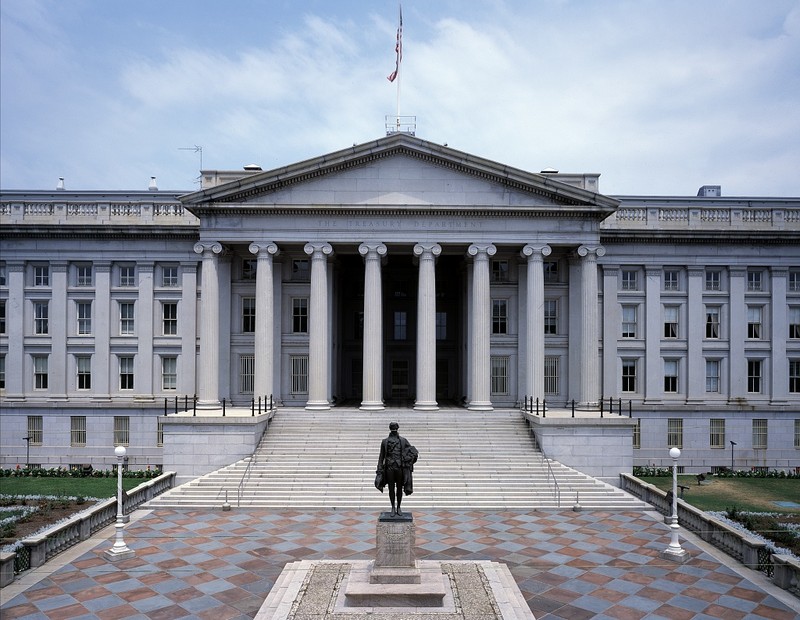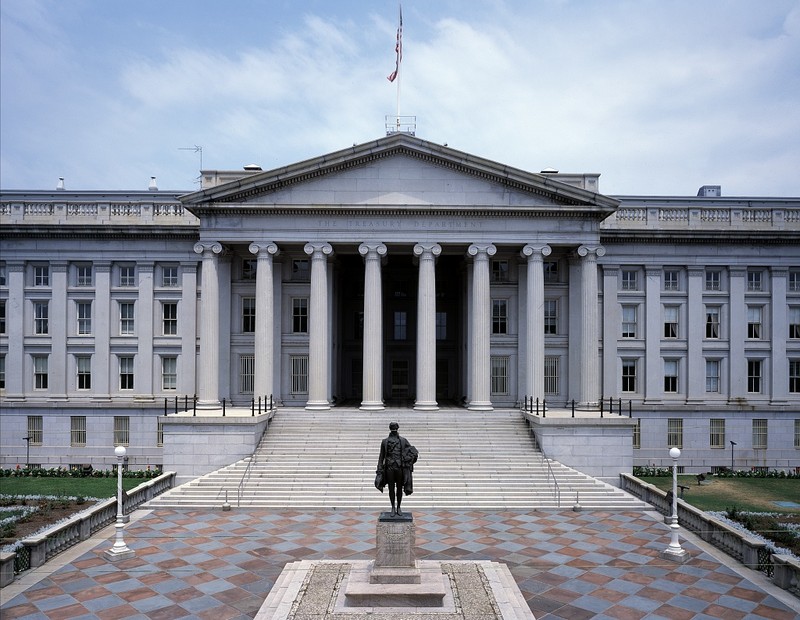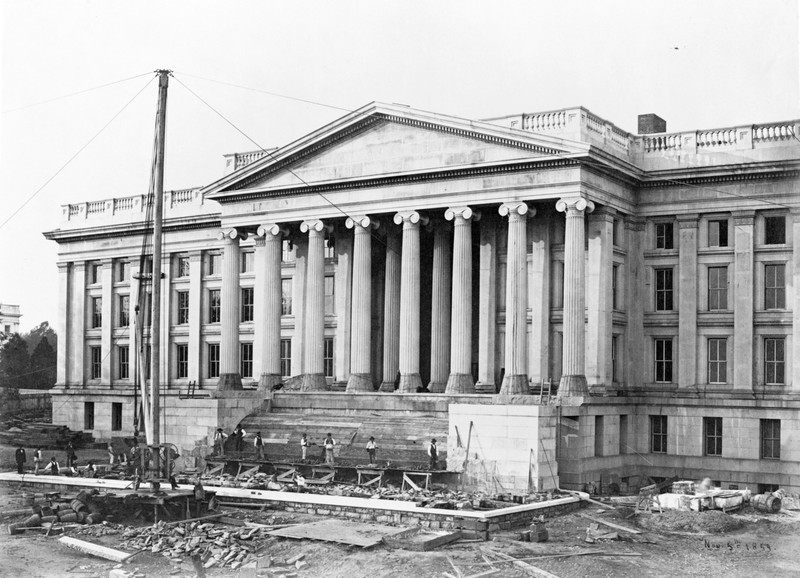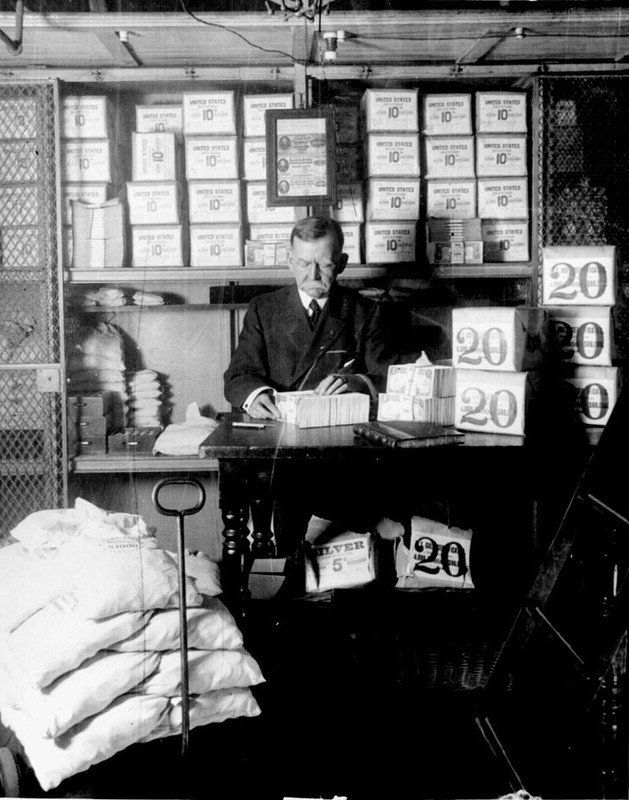U.S. Department of Treasury Building
Introduction
Text-to-speech Audio
Images
The U.S. Department of Treasury Building became a National Historic Landmark in 1971


Learn more about the history of the Treasury and banking with this book from Princeton University Press-click the link below for more info about this book.

Undated photo of construction of the building's front steps

Treasury Official at work in 1907

Backstory and Context
Text-to-speech Audio
The most notable feature of Mills’ design was a 350-foot long Greek inspired colonnade. This architect also completed the east and center sections of the present building. In 1844 the entire sandstone building was painted white. In subsequent years, architect Thomas Walter designed an expansion that was began in 1855. Construction was halted in 1858 due to rising financial concerns, but the project was complete three years later under the direction of architect Ammi B. Young.
Then came the Civil War and the completion of the south wing in 1862. Young stepped down and Isaiah Rogers was brought in to oversee the addition of the west wing. Within a couple years Alfred Mullett became the supervising architect. The west wing remained a focus through the war years and was completed near its end.
Then it was time to start the north wing. In 1867 the State Department building was demolished to make room for the north wing. It was largely completed two years later, in time to host the Inaugural Reception of President Ulysses S. Grant in the popular Cash Room. A few details lingered into 1870 when finally after 34 years of work and additions, the Treasury Building was complete.
In 1919 an annex building was constructed across the street from the Treasury Building. The Treasury Building itself has been the recipient of various upgrades from electrical to technological throughout the years. After a brief time of being in disrepair and another fire, it has seen regular cleanings as well major renovations and upgrades to continue to modernize the initial structure.Guided tours of the building are available.
The Treasury Department's function is to see to the financial stability of the country. The Department advises the president, produces money, collects revenue and more. It is under the leadership of the Secretary of the Treasury, which is currently Jacob Lew.
Sources
https://www.treasury.gov/about/history/Documents/web%20version%20Architectural%20History%20Treasury%20Building.pdf http://www.nps.gov/nr/travel/wash/dc35.htm W. Brown Morton III (February 3, 1971). "National Register of Historic Places Inventory-Nomination: United States Department of the Treasury" (pdf). National Park Service
